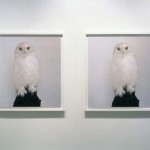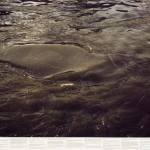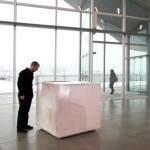Mr. Snowman: Neighborliness in Tough Times



This morning, I ran into this fellow on the Cambridge Common. When he tried to pick me up, I gave him the cold shoulder, which he seemed to enjoy. Oh, well.
It was cool to come upon the whimsical snowpersons that seemed to guide my way along the paths covered in deep snow by yesterday’s fierce blizzard …especially after President Barack Obama’s thoughtful talk, last night, about the importance of civility, the American national family and the need to move forward in a positive way after the horrific shootings in Tuscon. [ Here’s a link to the speech, in case you missed it: http://pol.moveon.org/azobamaspeech.html?id=25807-6209466-EecNh0x&t=3]
In fact, despite all the awful things going on the world–or maybe because of them–I’m finding that my neighbors–like whoever made the snowman–seem to be more considerate these days. After the last big storm, I ran into someone from the building next door (who asked me not to use his name) who was clearing snow, water and ice at a crosswalk so that people would not have to wade through deep water to reach the curb. And my downstairs neighbor, who doesn’t have a car, sometimes just shovels out other peoples’ cars for the fun (and exercise) of it.
Actually, I’ve felt that many people have been more neighborly, nicer, since 9/11…tho this group does not include certain Republicans and pundits who seem to get nastier as time goes on. I was shocked to learn that Ben Quayle, Vice President Dan Quayle’s son, who is now, unfortunately, a Congressman, actually said in a campaign ad that Barack Obama is the worst president this country has ever had..and don’t get me started on Sarah Palin’s trigger-happy “mean girl” rhetoric. Rather than engage in namecalling and derision, I’ll quit now –and simply thank whomever built Mr. Snowman for your neighborliness and sense of fun. You really brightened my day!
–Anita M. Harris
Anita M. Harris is president of the Harris Communications Group, a public relations and marketing firm in Cambridge, MA.

 DeDray makes small items–men’s clothing, thousands of tiny ceramic pots, sculptures in stitched fabric, carved bone, and wheel-thrown clay. As ICA materials point out, the smaller-than-life formal suits, embroidered patches, ties, and hats, as well as scaled-down chests of drawers, doors, and unique, thimble-sized vessels–and even facsimiles of used clothing stores complete with dust, make the viewer feel large and encourage thought about the content of the constructions. For example the coat in the photo to the left encompasses all sorts of other clothing–bras, pants, tops–making the point that individuals are composites of their experiences and other people.
DeDray makes small items–men’s clothing, thousands of tiny ceramic pots, sculptures in stitched fabric, carved bone, and wheel-thrown clay. As ICA materials point out, the smaller-than-life formal suits, embroidered patches, ties, and hats, as well as scaled-down chests of drawers, doors, and unique, thimble-sized vessels–and even facsimiles of used clothing stores complete with dust, make the viewer feel large and encourage thought about the content of the constructions. For example the coat in the photo to the left encompasses all sorts of other clothing–bras, pants, tops–making the point that individuals are composites of their experiences and other people.
 At the DeCordova, Drew’s show, “Existed” highlights “the cyclical nature of creation, decay, and regeneration through a selection of large-scale sculptures, installations, and works on paper.
At the DeCordova, Drew’s show, “Existed” highlights “the cyclical nature of creation, decay, and regeneration through a selection of large-scale sculptures, installations, and works on paper. At Boston’s
At Boston’s 


